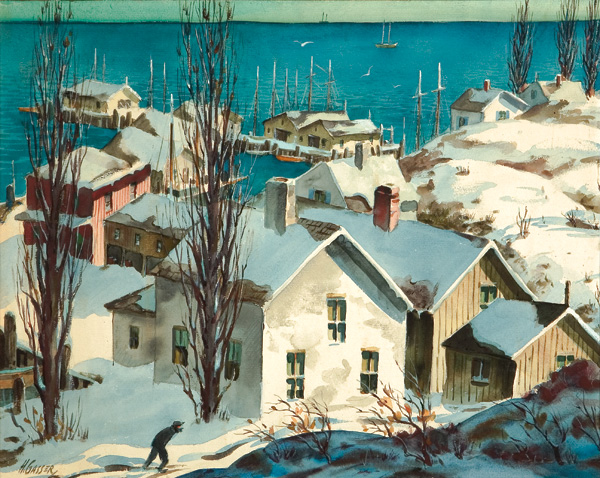Casein Painting: Methods and Demonstrations Review
What is casein paint? According to Wikipedia (teachers just love it when you cite Wikipedia), casein paint is a fast-drying and water-soluble paint made from milk casein (casein is a type of protein [eating casein paint will not make you stronger]). Casein paint has been used for a long time. When casein paint thoroughly dries it becomes water resistant (like acrylic paint). Casein paint is a fairly versatile medium. It can be used like watercolor or gouache, and dries to a nice velvet-like matte finish. When dry (and isolated using a varnish), casein paint can be used as an underpainting for oils. According to Casein Painting: Methods and Demonstrations, casein paint “provides an excellent stepping stone for the watercolorist who wants to do oil painting, and for the oil painter who may have hesitated in the past to attempt watercolor.” I was first introduced to casein paint in a Stephen Quiller book (maybe I’ll review it some day). If that’s not enough of an introduction to casein paint for you, feel free to check out this thread on the WetCanvas forum.
Now that we all know what casein paint is, we can move along to the review. The book is Casein Painting: Methods and Demonstrations by Henry Gasser. This book had its first print in 1950 (before computers, cars, fire, and language [basically the ice age]). You can buy it on Amazon.
Henry Gasser covers the materials used when painting with casein paint (brushes, palettes, surfaces), casein paint as watercolor, using casein paint opaquely like gouache, painting with casein paint on gesso panels, making an underpainting with casein, mounting paper, etc. If you want to know more about those things you should read the book.
Henry uses the following palette:
![]() Cadmium Yellow Light
Cadmium Yellow Light
 Cadmium Orange
Cadmium Orange
 Cadmium Red Light
Cadmium Red Light
 Alizarin Crimson
Alizarin Crimson
 French Ultramarine Blue
French Ultramarine Blue
 Phthalocyanine Blue
Phthalocyanine Blue
 Phthalocyanine Green
Phthalocyanine Green
 Yellow Ochre
Yellow Ochre
 Raw Sienna
Raw Sienna
 Burnt Sienna
Burnt Sienna
 Indian Red
Indian Red
 Burnt Umber
Burnt Umber
 Ivory Black
Ivory Black
 Titanium White
Titanium White
 Chromium Oxide Green
Chromium Oxide Green
 Davy’s Gray
Davy’s Gray
The paper in Casein Painting: Methods and Demonstrations has a nice gloss but tears easily when turning from page to page (the book is old so perhaps in its prime the pages didn’t tear so easily). There are a total of 7 color reproductions in this book. I wish all of the images were printed in color but I understand that the publisher saved money by printing it mostly in black and white. Casein Painting is a fairly short book, being only 67 pages long (or short), but had the author decided to bulk up the book by including frivolous information, then the book would be too long. The 67 page length seems just about right for Casein Painting.
I think that this book is a good introduction to casein paint and provides practical examples of how to use casein paint. If you collect art instruction books, this may be a nice addition to your collection (just remember to be careful when turning the pages). As of this review, Casein Painting can be purchased on Amazon for $15.20.
Here’s a taste of what Henry Gasser’s paintings looked like:




Leonard Brooks (1911-2011), a Canadian painter specialising in casein tempera, wrote several books on aqua-based media including casein. He’s perhaps most famous for his Mexican paintings from the 1950s. You can get his books on loan from Open Library at archive.org